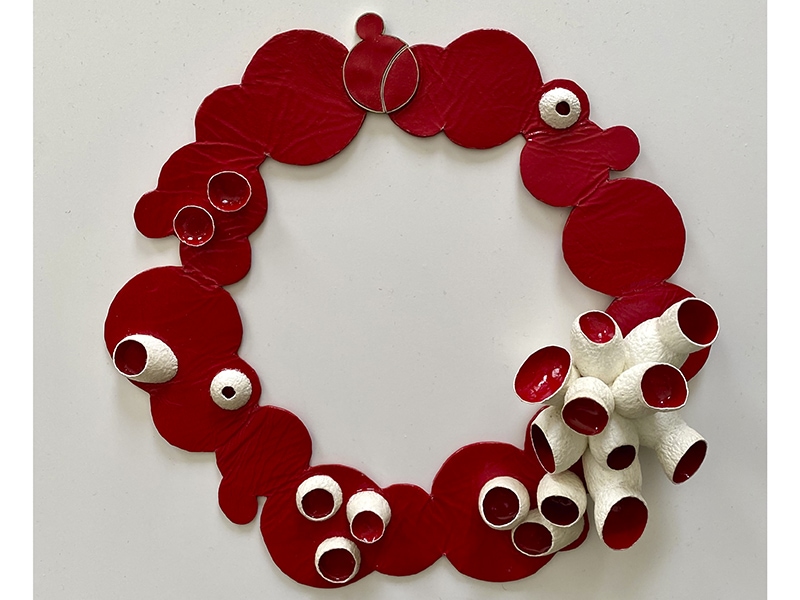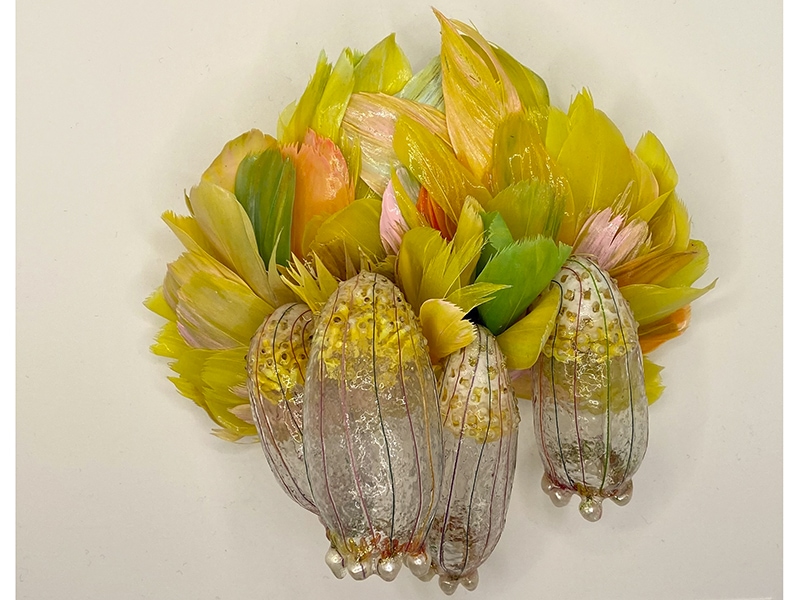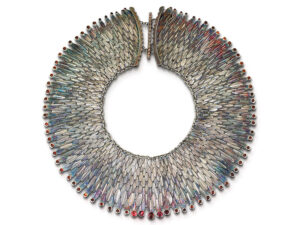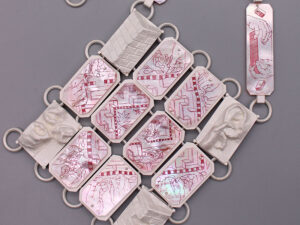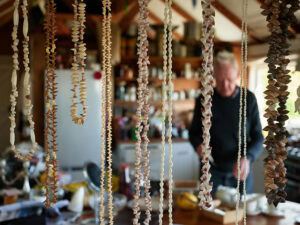Applications for the 2022 Young Artist Award are being accepted through January 9, 2022. This biennial competition for jewelry artists offers a prize of US$7,500 for the winner and US$1,000 for each of the four finalists, as well as an exhibition at Schmuck in March 2022. We encourage ambitious contemporary jewelry artists age 35 and under to apply for this international prize. Guidelines can be found here. You can apply here.
The three distinguished jurors are curator Chequita Nahar, 2020 Young Artist Award winner MJ Tyson, and collector and gallerist Karen Rotenberg. Here, Rotenberg talks about how art jewelry derives its value, the fact that she chooses what jewelry to wear based on the specific event she’s attending, and how wearing the jewelry is the most important affirmation of the work itself.

Melis Agabigum: Thank you for taking time to speak with me. I’m fascinated by the criteria you use in choosing works to add to your collection. AJF interviewed you in 2016.[1] You stated that “innovation, compelling visual statement, and construction” inform your decisions. Could you describe how each of these became part of your criteria? Have you seen your definitions of innovation or compelling visual statements change over the years?
Karen Rotenberg: Innovation, construction, and a compelling visual statement have always informed my decisions. With the emergence of 21st-century art jewelry, these terms suggest wider possibilities. Innovation has meant a greater concern for the environment. A shift from precious gems and metals to alternate materials. Construction meant new tools and techniques. A greater concern for how the work attaches and relates to the body.
Currently, I consider social, political, and gender issues a more important aspect of visual statements. I own a brooch by Saskia Detering, The Boat on the Shore. It speaks about migration and dislocation. It’s made of rope, burnished brass, and a tiny cut stone. The empty boat and the materials send a powerful message of concern, and perhaps hope. This often starts a conversation.

You’ve been collecting for some time. You’re a patron of several emerging and established artists. Have you noticed any trends in the works that you’re drawn to?
Karen Rotenberg: In the last few years, many trends in contemporary art jewelry have intensified.
- Collaboration. The internet opened the world to the contemporary art jeweler. COVID intensified the need to share and collaborate. An example might be AMEND. This broad exhibition honored the 100th anniversary of women’s right to vote in the US. Participants produced work specifically for it. Billie Jean Theide made Inside Looking Out. This brooch and plinth convey early protests for the right to vote.
- Environmental concerns. The urgent calls for responsible practice in a world of diminished resources has led to the greater use of alternative materials. There’s a need to give priority to social and political issues. Galleries featuring art jewelry have presented impressive exhibitions that respond to issues of race, gender, climate change, and COVID.
And, on a lighter note…
- Men reclaiming their place as collectors. In the art world, men have again become intrigued with the possibilities of wearing art. My husband, Michael, is my favorite example of this trend. This photo shows him wearing a brooch by Mariko Sumioka.

You say that “jewelry is meant to have a relationship to the body, and that this relationship is best served by wearing it…” I love your philosophy! My maternal grandmother gave me a gold, enameled, ladybug bracelet. It’s one of the first memories I have about my fascination with, and relationship to, jewelry. Do you recall any specific memories that led to your love of jewelry? Perhaps you saw a piece of jewelry and felt a sense of connection to it? Maybe you noticed someone else wearing a jewel?
Karen Rotenberg: Goldsmith Gerd Rothmann said, “The wearing of jewelry is the reality of jewelry.” I, too, believe that wearing the jewelry is the most important affirmation of the work. Presenting this art form on casual wear or “fashion” apparel provides the perfect canvas. It also gives a wider audience an immediate entry. I sometimes try to relate my choice of jewelry to the art event I’m attending. This has often led to an interesting “conversation” between wall art and body art. However, when the world went into lockdown, I realized that choosing an art piece to wear each day was not truly satisfying. It was a positive act. But my adornment couldn’t meet and greet the world beyond my home.

Jewelry is unlike any other art form. It’s so intimate. Has your relationship to jewelry changed in any way through your experiences of jurying, collecting, curating, selling, etc?
Karen Rotenberg: Yes, collecting, curating, and jurying have changed my relationship to jewelry. They’ve led to a greater appreciation of concept, technical innovation, and the international scope of this art form. It has also caused me to focus my own collecting on young and mid-career jewelers. These artists use alternate materials and other innovative strategies to tell the compelling stories of our time.
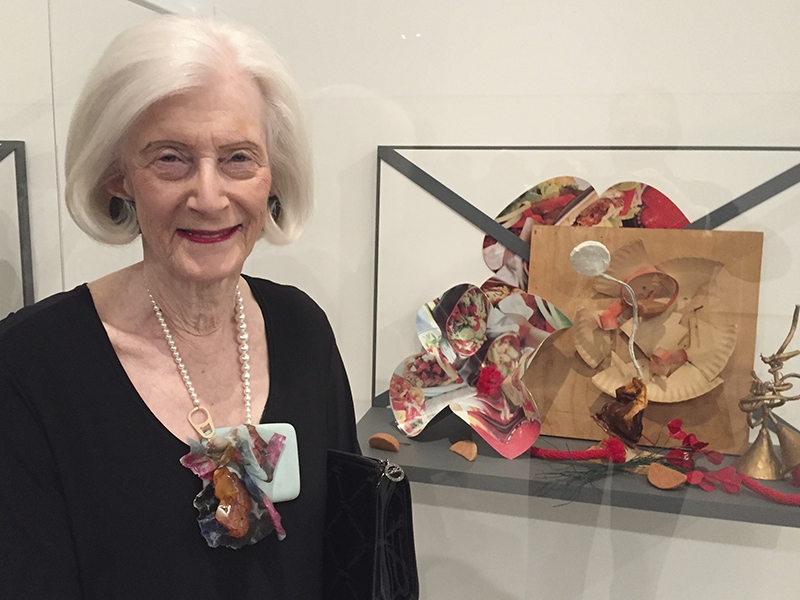
Your collection includes a broad variety of jewelry. What are your thoughts on “preciousness” in jewelry made from alternative or nontraditional materials? How do you see this concept play out in pieces that don’t use precious metals or stones?
Karen Rotenberg: We now speak of contemporary art jewelry as a serious art form. So should we not reconsider what we deem “precious”? A painting is not considered precious because of the cost of materials. It’s not about the paint and canvas. The value comes from a cogent visual message. Art jewelry is committed to environmental conservation. It emphasizes alternate materials, innovation, and compassion to enhance its visual communication. Perhaps it’s time to consider the conservation, collaboration, and innovation of contemporary art jewelry and its message to many as the new “precious.”
[1] https://artjewelryforum.org/interviews/interview-with-collectors-karen-and-michael-rotenberg/.
